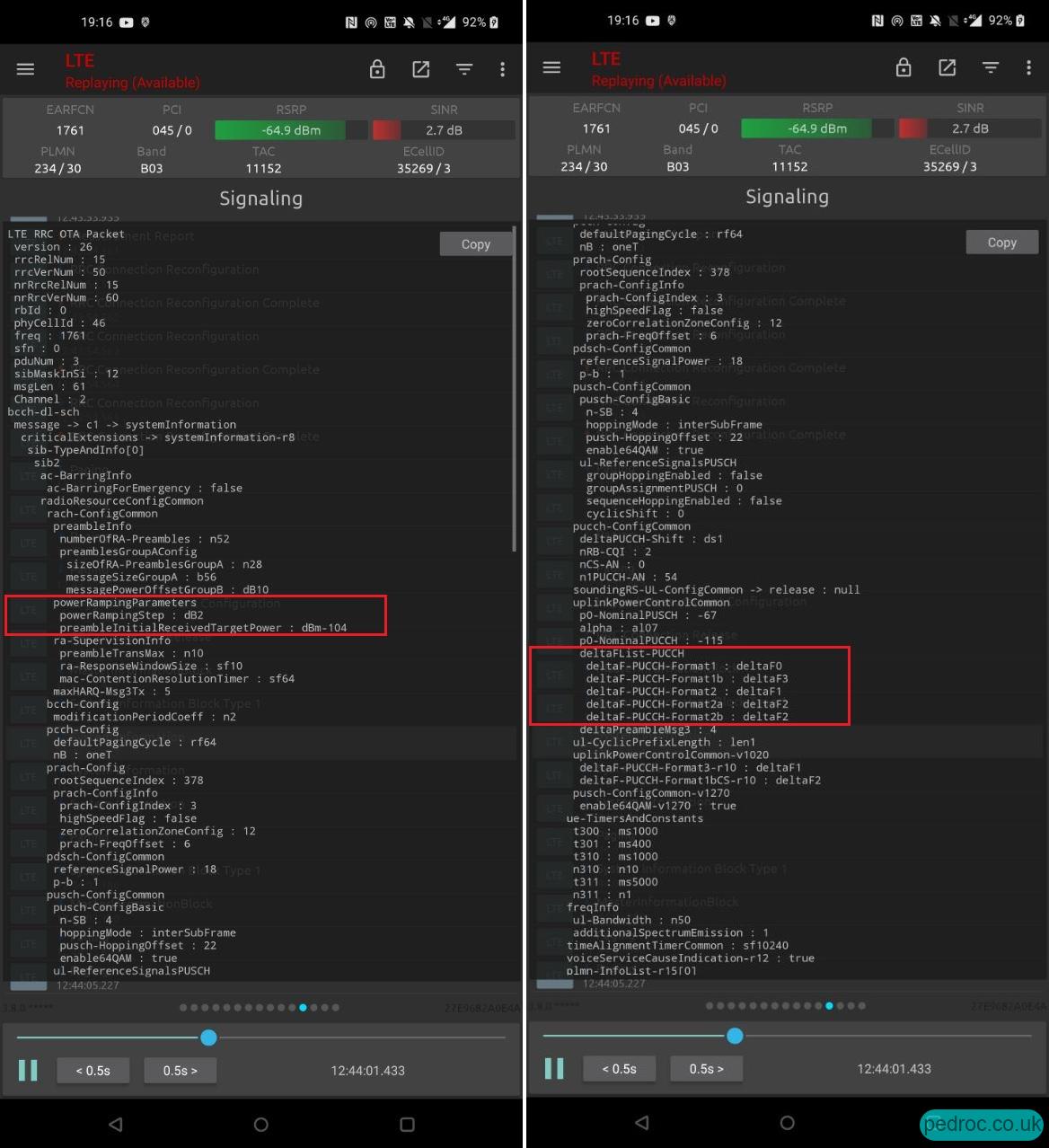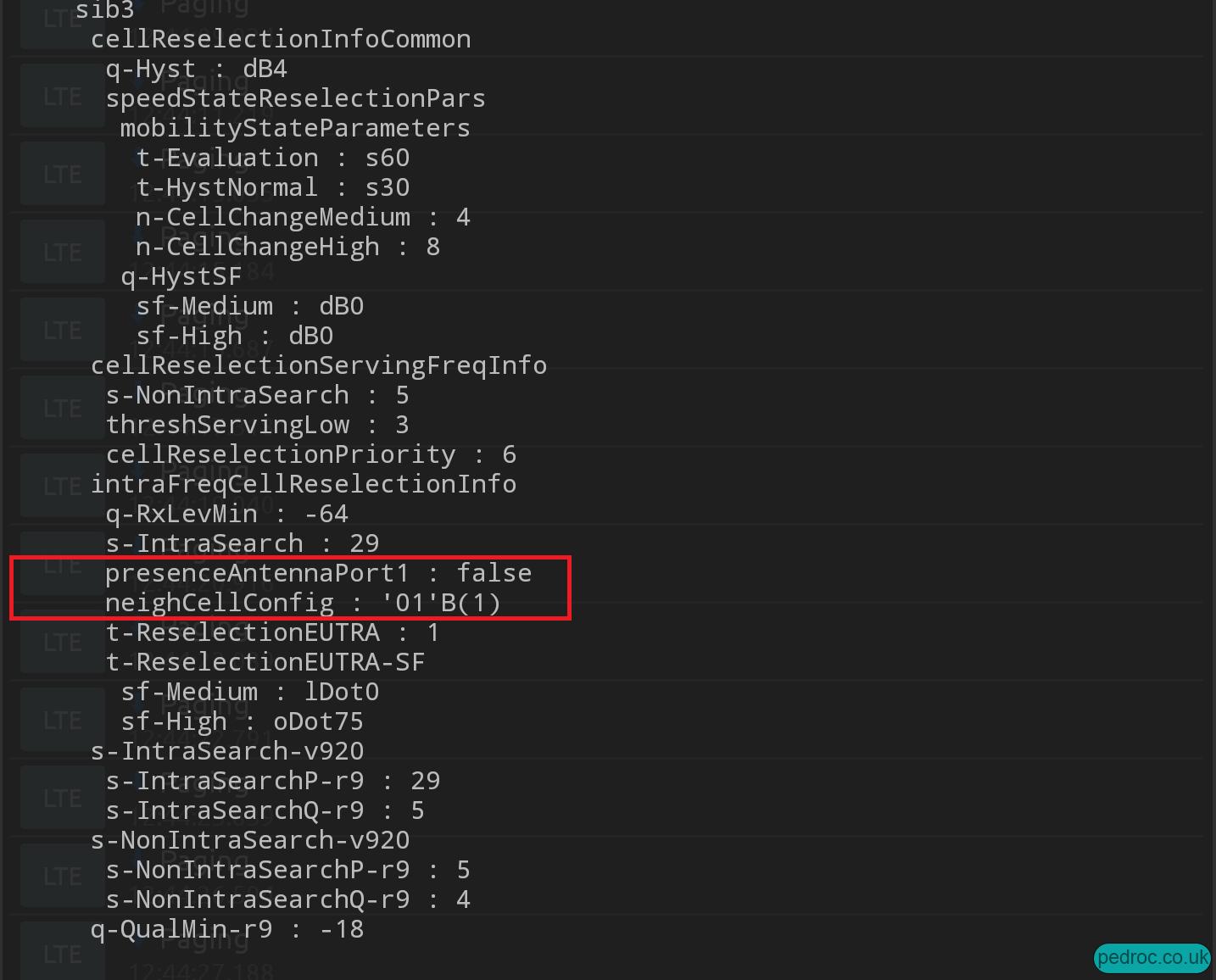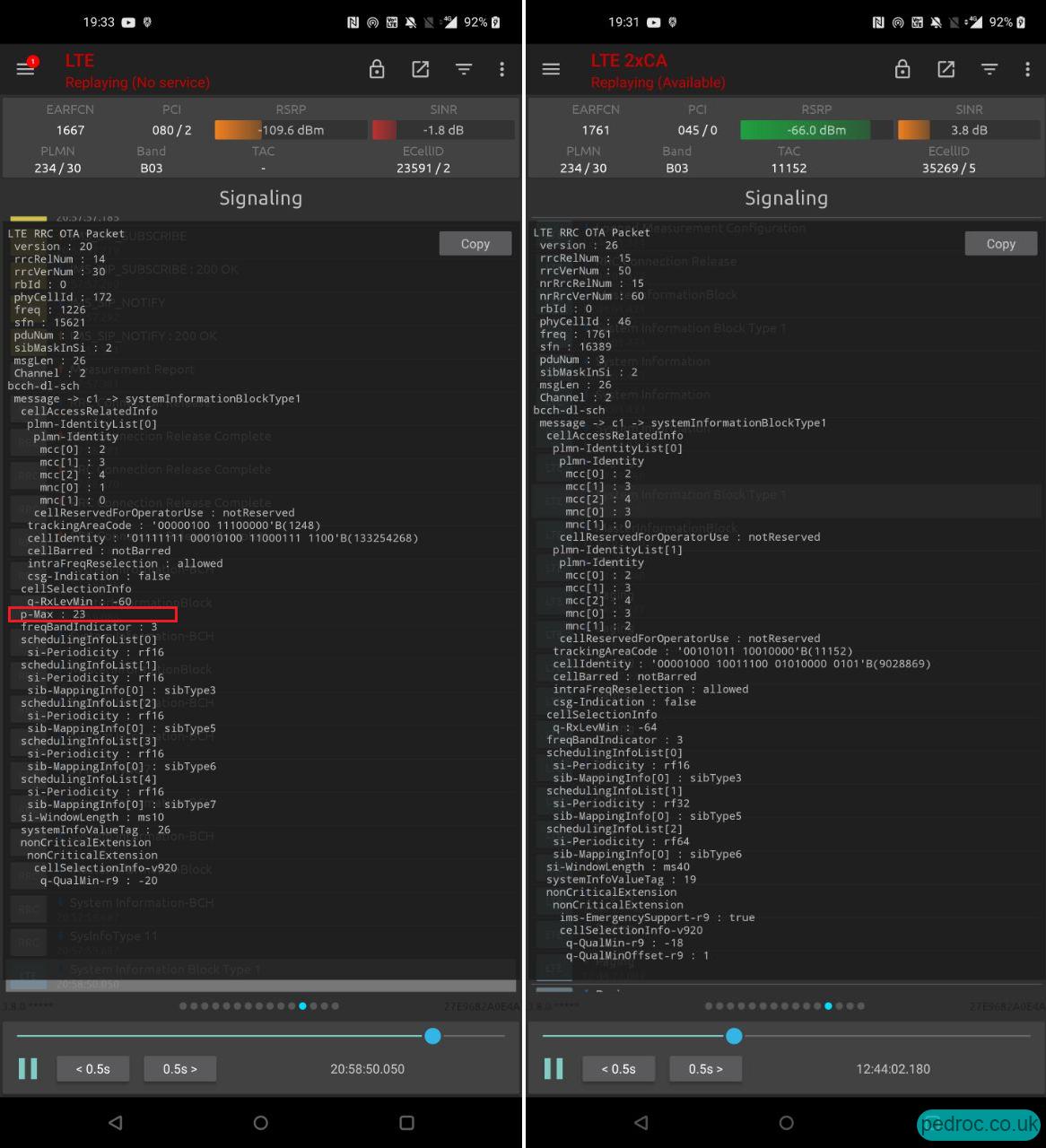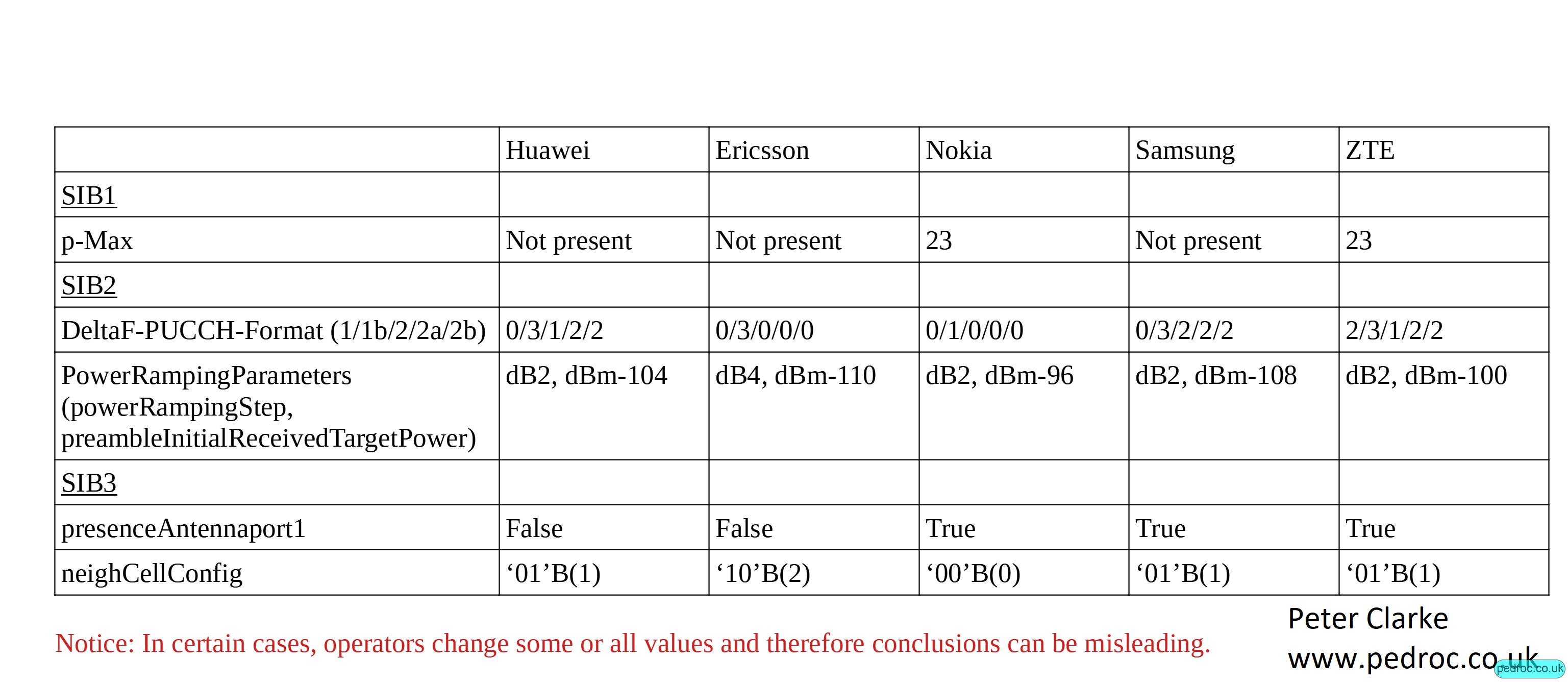LTE Vendor Recognition from Layer 3 Signalling information
Identifying the LTE vendor at a site can be trivial if equipment is appropriately visible and having identifiable characteritics. However, this is not always possible but a method exists which can reliably identify the LTE vendor in use: layer 3 signalling hallmarks which are not changed very often. The proviso to this is that on rare occassions, some or all of the values below are changed with misleading results therefore.
SIB 2

The SIB 2 includes a number of values that we are interested in: Power Ramping Parameters and DeltaFLists. I generally first look at the latter. Huawei is DeltaF 0/3/1/2/2 as shown in the image, Ericsson 0/3/0/0/0, Nokia 0/1/0/0/0, Samsung 0/3/2/2/2 and ZTE 2/3/1/2/2. For Power Ramping Step, Huawei, Nokia, Samsung and ZTE typically have a dB2 value with Ericsson at dB4. The Preamble Received Target Powers vary with the following commonly: Huawei dBm-104, Ericsson dBm-110, Nokia dBm-96, Samsung dBm-108 and ZTE dBm-100.
SIB3

Next I typically look at the SIB3 where two values are of interest: Presence of antenna port 1 and neighbour cell config. For the former, False is expected on Huawei and Ericsson with True for Nokia, Samsung and ZTE. For Neighbour cell config, the following are expected: '01'B (1) for Huawei, Samsung and ZTE; Ericsson using '10'B(2) and Nokia '00'B(0).
SIB1

Finally, I look for P-max in the SIB1. This is not present on Huawei, Ericsson and Samsung and present with value 23 on Nokia and ZTE.
Summary
